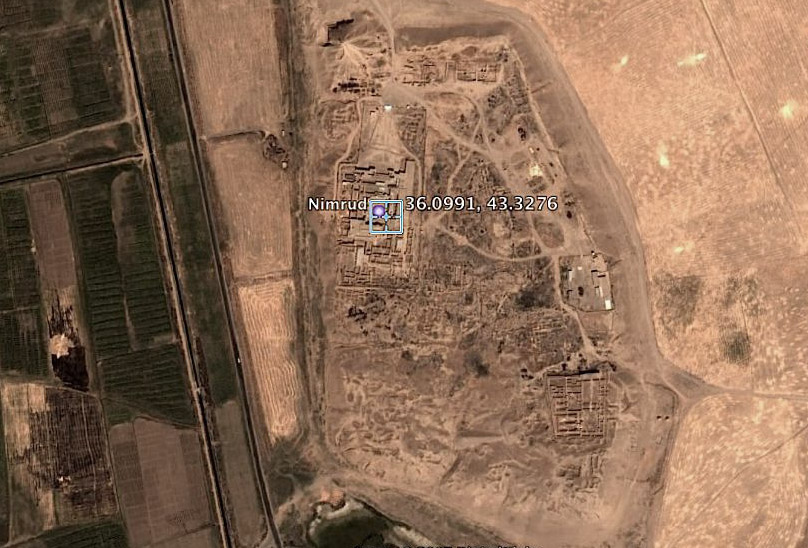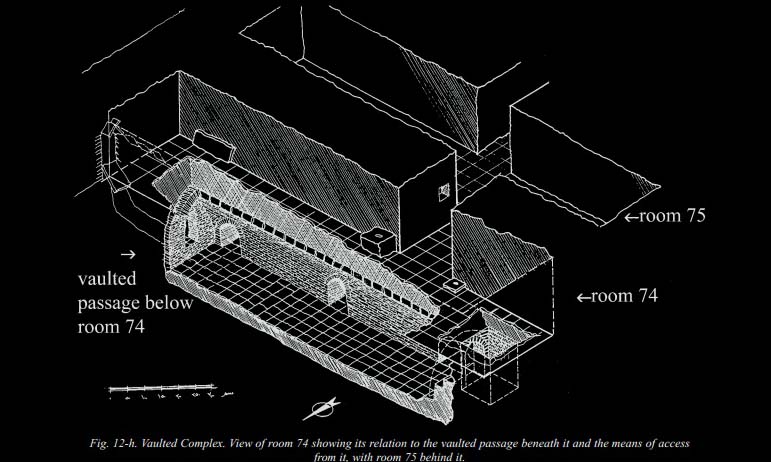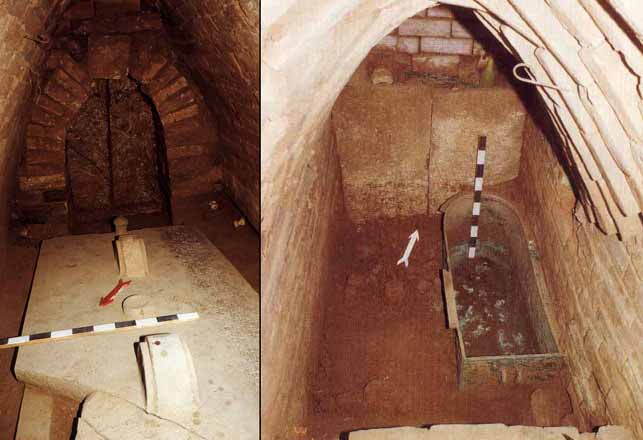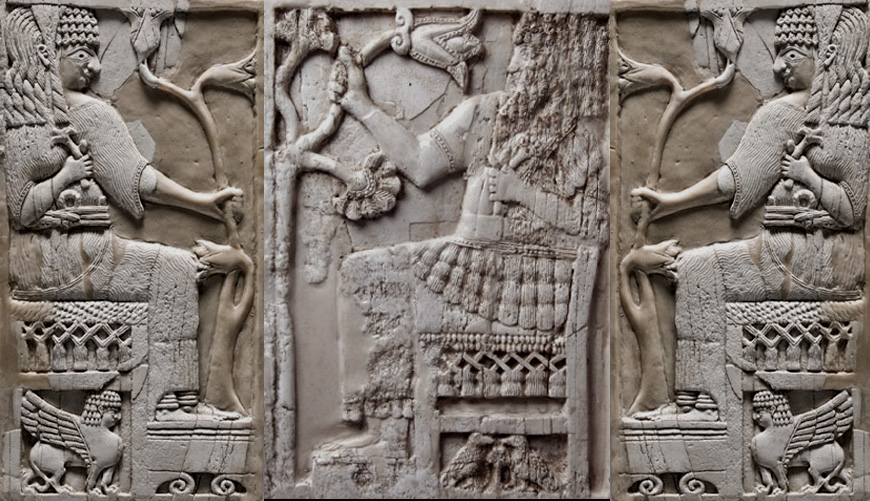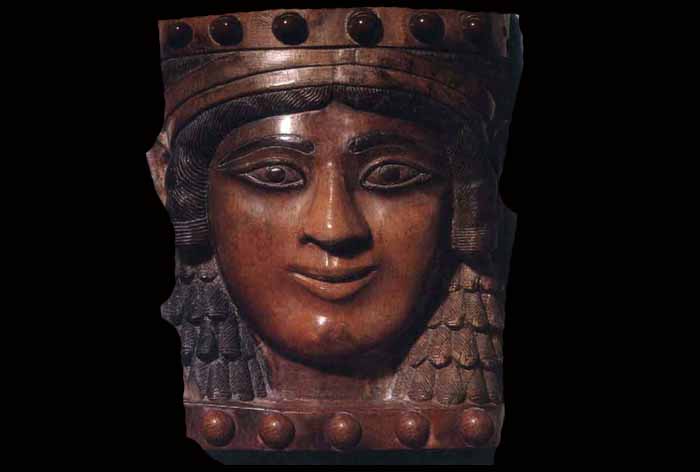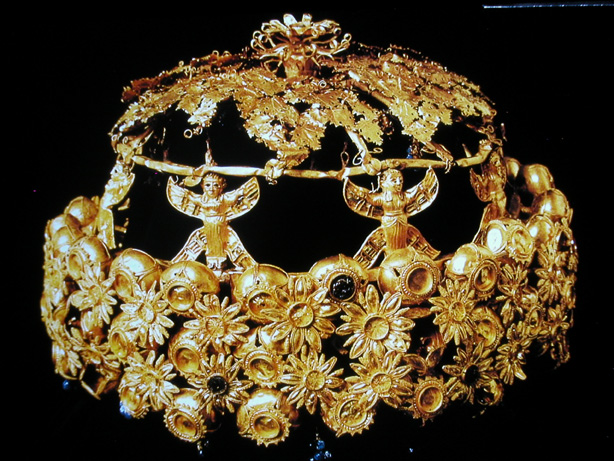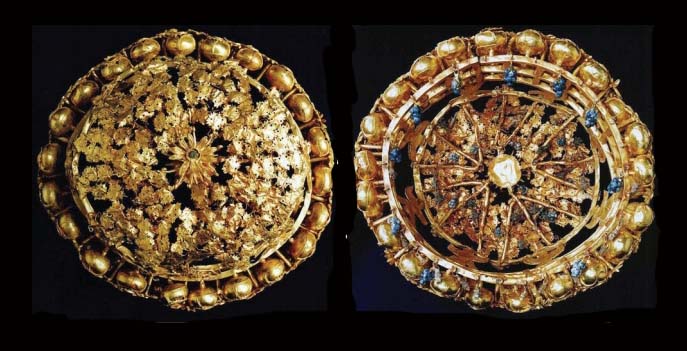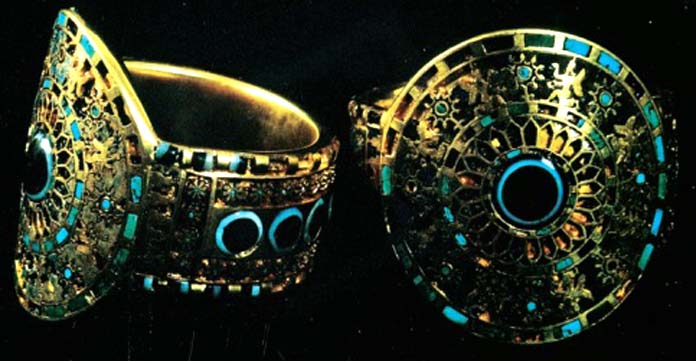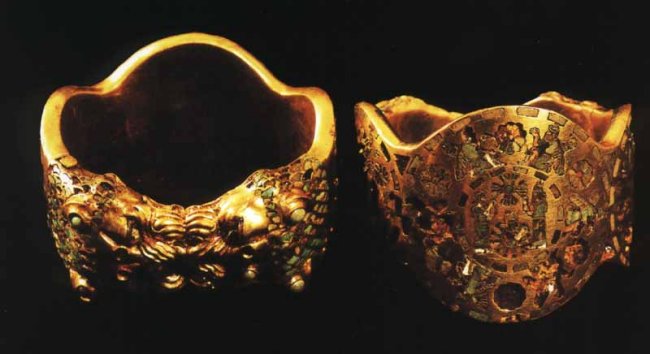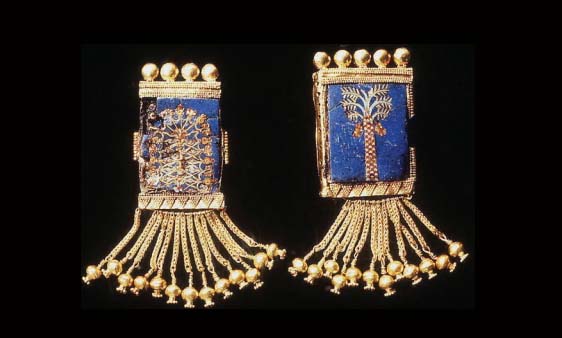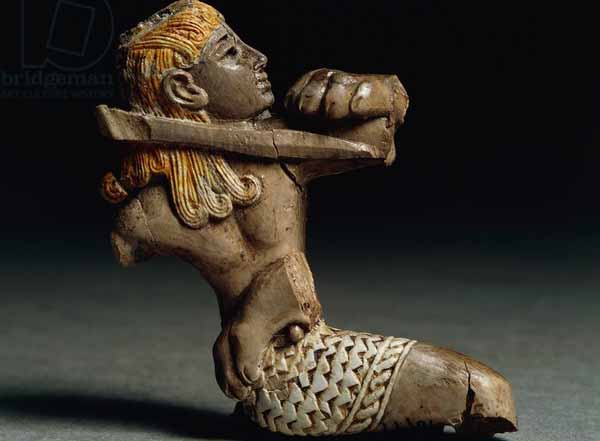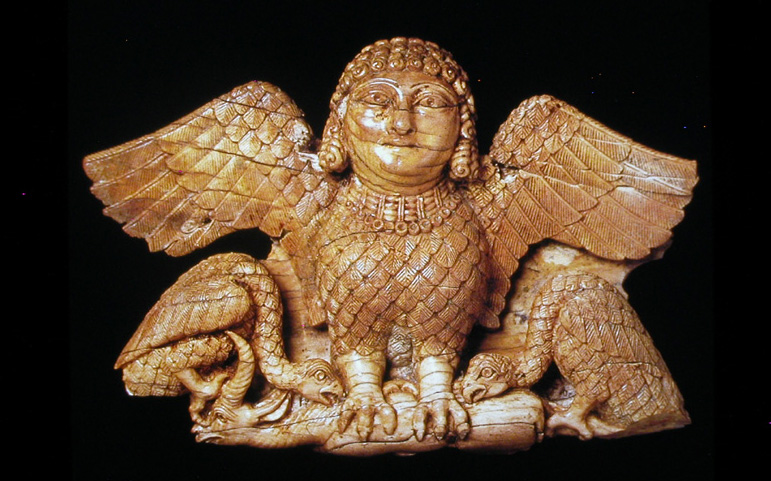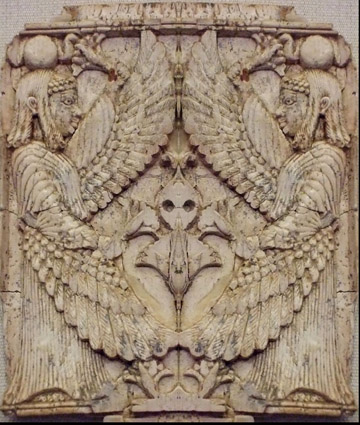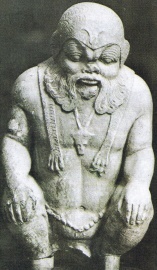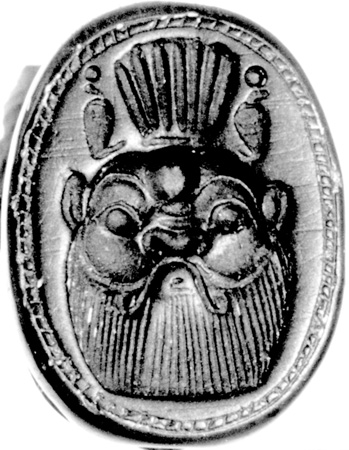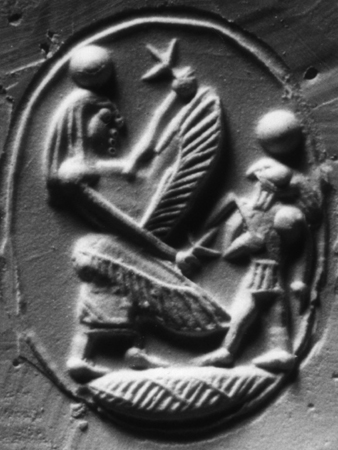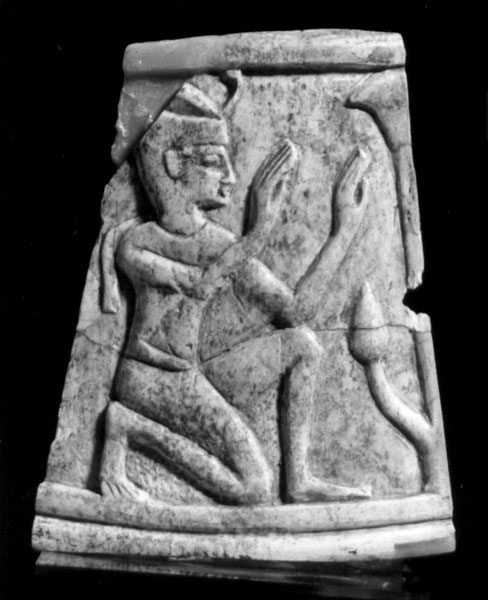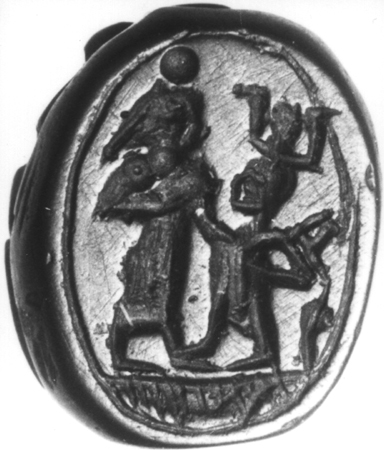It looks like you're using an Ad Blocker.
Please white-list or disable AboveTopSecret.com in your ad-blocking tool.
Thank you.
Some features of ATS will be disabled while you continue to use an ad-blocker.
share:
Among the most remarkable finds of recent times was the discovery of the relatively intact burials of the Assyrian Queens of Nimrud, the importance of
which was largely overshadowed by the Gulf war.
As entire series of underground vaults were discovered as well as wells containing many bodies some with grave goods, as much as up to 400 in one well alone all held in iron shakles, this were considerations of this report New Light on Nimrud
The Royal burials were similar to the vault burials of the Sumerians including the bath tub shaped sarcophagus cut into the floor.
The Assyrians appeared to have been avid collectors of carved ivory from places such as Phonecia and Egypt, large numbers of which were found, this also influenced their own work in ivory.
Perhaps much of their collection had arrived in the form of tribute, their seeming patronage of the arts somewhat at variance with the fierce identity they liked to project to the public.
All of the Royal burials had protective curses, this does not seem to have troubled the Iraqi archaeologists but perhaps it should have...
The craft work is of the very highest quality, they were pioneers in many materials such as glass and ceramic glazing, though also of course drawing upon the rich legacy of Mesopotamia.
Bitu was an identification of the door keeper into the underworld, the word literally meant 'enter!'
The curses generally are directed towards the individuals after they themselves die, that they will not be allowed into the afterlife but ever remain restless spirits.
Some of the artifacts recovered were quite mysterious and not found elsewhere, such as a carved black stone cup with tubular attachment which i can only find a drawn schematic of, there are those hinting at alien or more properly Giselian artifacts discovered at Nimrud.
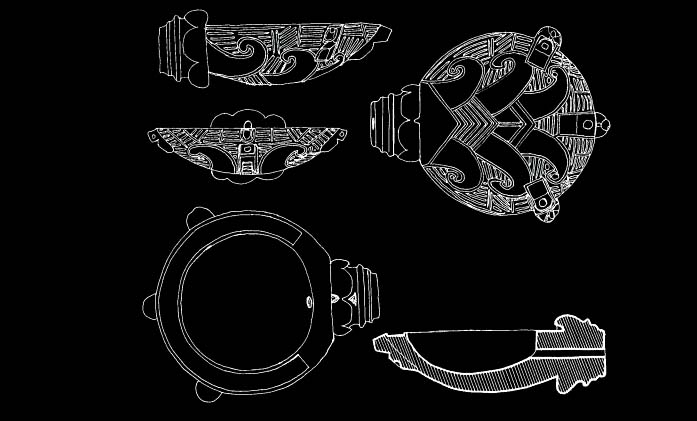
On that note there is also a very curious relief carving of the Assyrian King relaxing in his garden at Nineveh amongst his harem upon a very curious assemblage and in the manner of a fish...
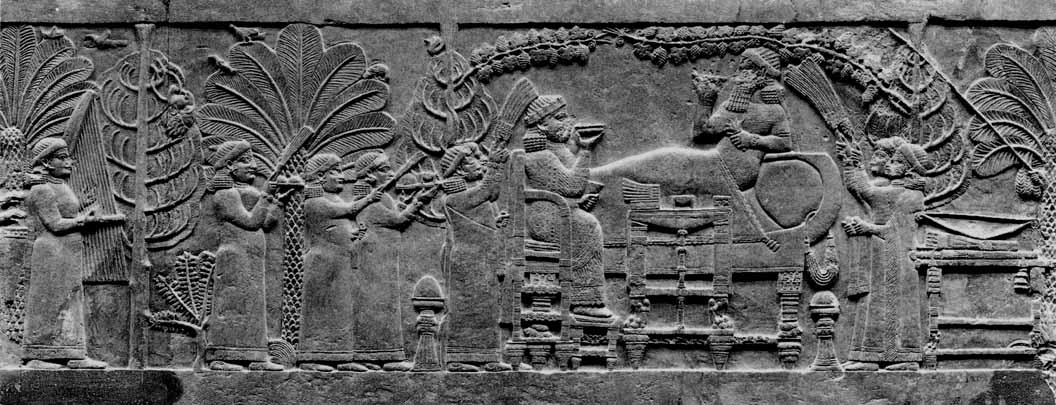
Iraqi excavations in 1988–1990 revealed the tombs of a number of Assyrian queens containing astonishing quantities of gold objects and jewellery on a scale to match the discovery of the tomb of Tutankhamun. Following the 1st Gulf War in 1991 and the imposition of sanctions, further archaeological work in Iraq, at least for foreign missions, became impossible
As entire series of underground vaults were discovered as well as wells containing many bodies some with grave goods, as much as up to 400 in one well alone all held in iron shakles, this were considerations of this report New Light on Nimrud
Excavations and restorations continued in the rest of the palace and in 1988, while clearing the debris and tidying the brick paving of Room MM, workers stumbled on the first of the queens’tombs . This remarkable find inspired the excavators to continue digging in parts of the Harem, which had not been excavated. They were rewarded in the next two seasons with two more tombs, where about 1000 gold objects were found. In 1991 a fourth tomb was discovered in which glazed pots and bronze and silver vessels were found
The Royal burials were similar to the vault burials of the Sumerians including the bath tub shaped sarcophagus cut into the floor.
The 1992 season continued with the excavation of a courtyard and the rooms around it. beneath Rooms74 and 75, an unusual structure was discovered, a narrow vaulted passage leading to three small vaulted rooms. Many remarkable finds were discovered here including cylinder seals, numerous beads, glazed pottery, and an inscribed stone tablet of Shalmaneser III
Muzahim Mahmud noticed some anomalies in the floor, which led him to dig below it. He found the corbelled vault of a brick-built chamber measuring 2.5 ×1.85 × 2 m, with some bricks naming Ashurnasirpal II (883–859 BC), possibly in a secondary context, and a sarcophagus let into the floor
The Assyrians appeared to have been avid collectors of carved ivory from places such as Phonecia and Egypt, large numbers of which were found, this also influenced their own work in ivory.
Inside the sarcophagus there were the blackened remains of linen garments and between the layers of these were the skeletons of two women of different heights. The many inscribed objects enabled one of the bodies to be identified as Yaba’; the other was Banêti, wife of Shalmaneser V (726–722 BC) or Ataliya, wife of Sargon II (721–705 BC).
Perhaps much of their collection had arrived in the form of tribute, their seeming patronage of the arts somewhat at variance with the fierce identity they liked to project to the public.
The inscribed objects from the queens’ tombs are written in pictographic, cuneiform and alphabetic scripts. They express thoughts in many languages, such as Sumerian,Akkadian, Hittite, Kassite, Phoenician, Aramaic and South Arabian. They are written upon gold, silver, bronze,stones, ivory, bricks, clay and probably other materials that have since perished
All of the Royal burials had protective curses, this does not seem to have troubled the Iraqi archaeologists but perhaps it should have...
By the name of Shamash, Ereshkigal and the Anunnaki, the great gods of the earth, mortal destiny overtook Yabâ,the queen, in death, she went to the path of her ancestors.
Whoever, in the future, be it a queen who sits on the throne or a palace lady who is a concubine of the king moves me from my tomb, or puts anybody else with me, and lays his hand upon my jewellery with evil intent or breaks open the seal of that tomb, above earth,under the rays of the sun, let his spirit roam outside in thirst, below in the underworld, when libations of water are offered, he must not receive with the Anunnaki as a funerary offering any beer, wine or meal.
May Ningishzida and the great door-keeper, Bitu, the great gods of the underworld, afflict his corpse and ghost with eternal restlessness.
The craft work is of the very highest quality, they were pioneers in many materials such as glass and ceramic glazing, though also of course drawing upon the rich legacy of Mesopotamia.
Belonging to Mullissu-mukannishat-Ninua, queen of Ashurnasirpal, king of Assyria mother of Shalmaneser, king of Assyria, No one later may place herein anyone else, be it a palace lady a queen, nor remove this sarcophagus from its place.
Anybody who removes this sarcophagus from its place, his spirit will not receive funerary offerings with other spirits: it is a taboo of Shamash and Ereshkigal
Bitu was an identification of the door keeper into the underworld, the word literally meant 'enter!'
Daughter of Ashur-nêrka-da’’inni, chief cup-bearer of Ashurnasirpal, king of Assyria. Anyone after who removes my throne from before the shades of the dead,may his spirit receive no bread!
May some one later clothe me with a shroud, anoint me with oil and sacrifice a lamb
The curses generally are directed towards the individuals after they themselves die, that they will not be allowed into the afterlife but ever remain restless spirits.
Belonging to Mullissu-mukannishat-Ninua, queen of Ashurnasirpal, king of Assyria, of Shalmaneser, king of Assyria.
No one later may place herein anyone else, whether a palace lady or a queen, nor remove this sarcophagus from its place; whoever removes this sarcophagus from its place, his spirit will not receive funerary offerings with other spirits: it is a taboo of Shamash and Ereshkigal—daughter of Ashur-nêrkada’’inni,chief cup-bearer of Ashurnasirpal, king of Assyria.
Some of the artifacts recovered were quite mysterious and not found elsewhere, such as a carved black stone cup with tubular attachment which i can only find a drawn schematic of, there are those hinting at alien or more properly Giselian artifacts discovered at Nimrud.

On that note there is also a very curious relief carving of the Assyrian King relaxing in his garden at Nineveh amongst his harem upon a very curious assemblage and in the manner of a fish...

edit on Kpm13115vAmerica/ChicagoFriday1631 by Kantzveldt because: (no reason given)
a reply to: Kantzveldt
Very interesting as are usually your threads on ancient civilizations...
On the last pic,it seems to me like he is resting on a bed,covered from the waist down,making it look like he had a fish lower body...but I could be wrong...
Anyway star and flag for you
Very interesting as are usually your threads on ancient civilizations...
On the last pic,it seems to me like he is resting on a bed,covered from the waist down,making it look like he had a fish lower body...but I could be wrong...
Anyway star and flag for you
a reply to: wildapache
Yes it's just an impression the artist is trying to suggest, but i do think it is to convey the King as a wise fish sage in the manner of the Apkallu.
Yes it's just an impression the artist is trying to suggest, but i do think it is to convey the King as a wise fish sage in the manner of the Apkallu.
a reply to: Kantzveldt
Wow, bets thread ever; best work on a OP I've seen on ATS.
I love your Avatar picture, is that a Da Vinci sketch?
Wow, bets thread ever; best work on a OP I've seen on ATS.
I love your Avatar picture, is that a Da Vinci sketch?
a reply to: TonyS
I think even the first gulf war prevented a proper evaluation of everything recovered, there were hundreds of bodies and thousands of artifacts, and no doubt things have gone missing since though not the major pieces which were safely stored during the 2nd gulf war, Islamic state would be the end of it all but not happened yet
I think even the first gulf war prevented a proper evaluation of everything recovered, there were hundreds of bodies and thousands of artifacts, and no doubt things have gone missing since though not the major pieces which were safely stored during the 2nd gulf war, Islamic state would be the end of it all but not happened yet
Interesting thread. S&F
In the last picture above, the wings appear to be as fringes on their sleeves, do they not, rather than as a part of their body?
In the last picture above, the wings appear to be as fringes on their sleeves, do they not, rather than as a part of their body?
a reply to: Kantzveldt
There is something so beautiful about that jewellery, I'm drooling over it here! Although I'm trying to gaze on it reverently, given the curses they carry.
The headdress looks Scythian, lots of crossover and influence, I guess. What was the black cup for, are there any theories?
There is something so beautiful about that jewellery, I'm drooling over it here! Although I'm trying to gaze on it reverently, given the curses they carry.
The headdress looks Scythian, lots of crossover and influence, I guess. What was the black cup for, are there any theories?
Great thread as usual Kantzveldt.
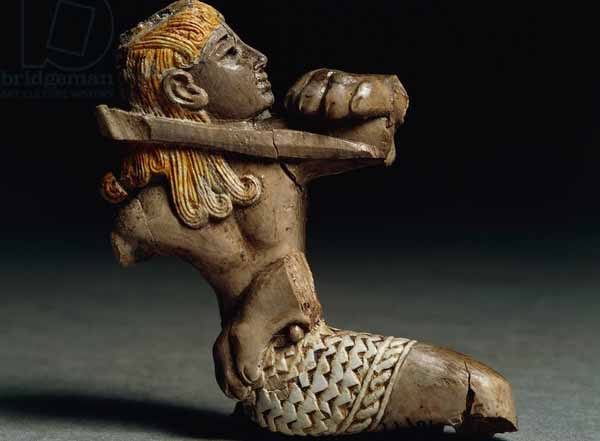
Help a brotha out pls, what is this kneeling figure holding?

Help a brotha out pls, what is this kneeling figure holding?
a reply to: Spider879
It's broken but i suspect he was holding a sword and stabbing a lion you can see the paw of, you might like these Nimrud ivories of African tribute bearers;
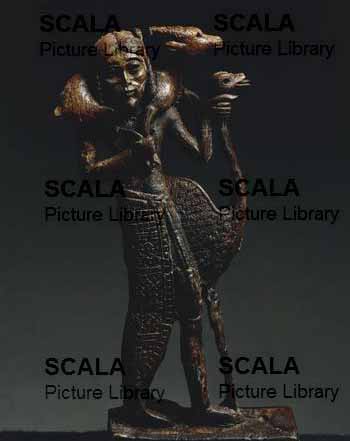
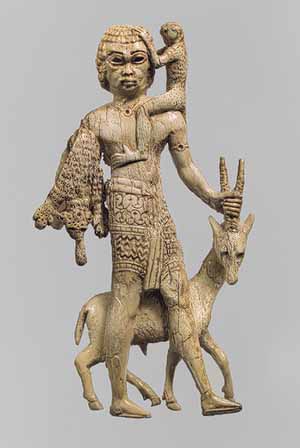
a reply to: aboutface
Yes, that looks like a Pseudo-Egyptian Phonecian piece.
a reply to: beansidhe
I'm not sure really until i can source a photo of the actual object, there was also this multiple cups on stems so possibly also some sort of tubular arrangement.
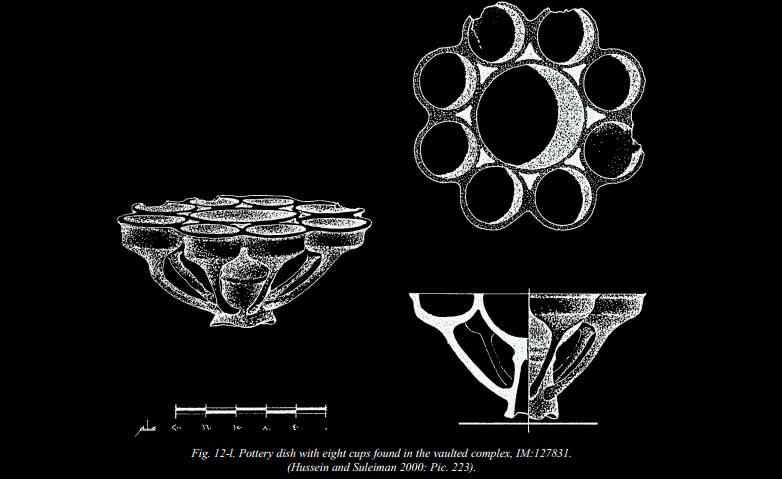
It's broken but i suspect he was holding a sword and stabbing a lion you can see the paw of, you might like these Nimrud ivories of African tribute bearers;


a reply to: aboutface
Yes, that looks like a Pseudo-Egyptian Phonecian piece.
a reply to: beansidhe
I'm not sure really until i can source a photo of the actual object, there was also this multiple cups on stems so possibly also some sort of tubular arrangement.

edit on Kam13116vAmerica/ChicagoSaturday1731 by Kantzveldt because: (no reason given)
a reply to: Kantzveldt
I told you more then 2 years ago you really should look into what is below the clam shell monument called the tomb of the unknown soldier Baghdad Iraq in what was once in the green zone, then the IZ, now in the vacinity of the biggest American embassay compound. Some will say that below was an old republican guard bunker which is true, below that is some really crazy sh1t you will find alot of similar imagery from the op along with trapped walls and all kinds of things. I implore you to look into that site. As always you write some awesome threads Kantz.
In this vid they are barely down the first stair case farther down you will find large swords mounted around a pillar moving down to mud boxes filled with bones. I think you should look into it =D I wish I had pix but my job in the service kind of made that illegal, I have some neat pix of ziggurats I have never seen or read about online as well those were taken from the air. The underground stuff was a lot more restricted.
I told you more then 2 years ago you really should look into what is below the clam shell monument called the tomb of the unknown soldier Baghdad Iraq in what was once in the green zone, then the IZ, now in the vacinity of the biggest American embassay compound. Some will say that below was an old republican guard bunker which is true, below that is some really crazy sh1t you will find alot of similar imagery from the op along with trapped walls and all kinds of things. I implore you to look into that site. As always you write some awesome threads Kantz.
In this vid they are barely down the first stair case farther down you will find large swords mounted around a pillar moving down to mud boxes filled with bones. I think you should look into it =D I wish I had pix but my job in the service kind of made that illegal, I have some neat pix of ziggurats I have never seen or read about online as well those were taken from the air. The underground stuff was a lot more restricted.
edit on
17-1-2015 by Brotherman because: (no reason given)
a reply to: Brotherman
I can try but it always seems to me that either you have access to the actual artifacts and information or you don't, and if not there's little point looking around the internet in general or following up on generally hoax claims of no substance.
It was the FL article that caused me to have a considered look at Nimrud and find a paper on what was uncovered, it's impressive but i don't see any artifact indicating 'Giselian', i also couldn't find any mention of 'Giselian kedeths' in the recovered inscriptions, as usual it would probably be better if people put up or shut up...but still it was well worth looking into the report.
I can try but it always seems to me that either you have access to the actual artifacts and information or you don't, and if not there's little point looking around the internet in general or following up on generally hoax claims of no substance.
It was the FL article that caused me to have a considered look at Nimrud and find a paper on what was uncovered, it's impressive but i don't see any artifact indicating 'Giselian', i also couldn't find any mention of 'Giselian kedeths' in the recovered inscriptions, as usual it would probably be better if people put up or shut up...but still it was well worth looking into the report.
The locations of the other Giselian kedeths referred to in the recovered inscriptions remain unknown.
Of key importance is that the throne room suite, unlike that in the earlier sites so far excavated, includes too adjoining ablution and also the strange object labeled KYR-377.
FL-080204 Preliminary report on the Giselian objects recovered at Iraq. Defense Report.
FL-160705 INAA and EDX results from allegedly Giselian object KYR-377.
originally posted by: Kantzveldt
a reply to: TonyS
Yes it's from the Madonna and Saint Anne with Holy infants cartoon, but anyway also yes the Nimrud excavations found an enormous amount of remarkable material in those vaults which isn't well enough known .
that image has been mirrored with a graphics program. whats the original look like?
the winged creature is sporting an egyptian uraeus.
a reply to: undo
It looks like this;
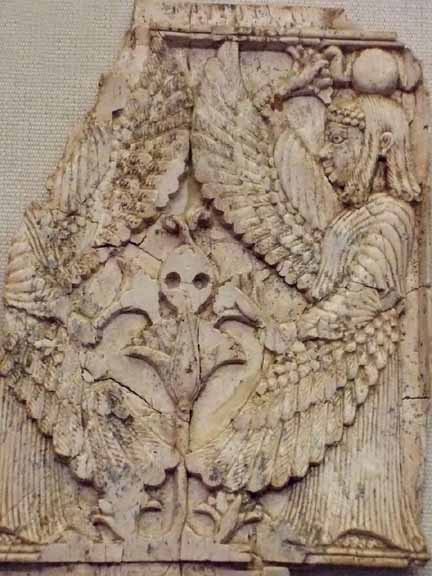
Sort of looks like a little alien in the middle but they appear to have grown on trees;
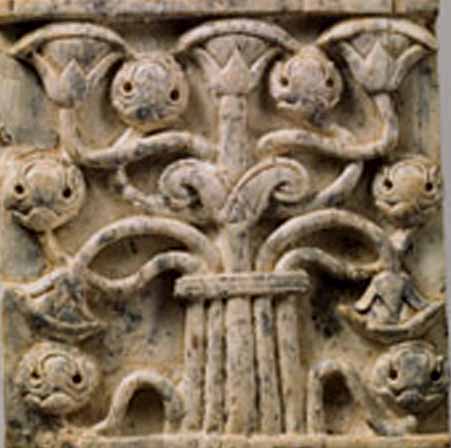
And here's another with a row of Wadjet at the top;
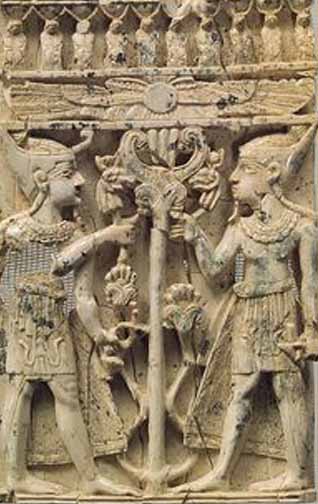
They seem to have liked strange Egyptian ivories, in fact their collection reminds me of Father Crespi's...!?!
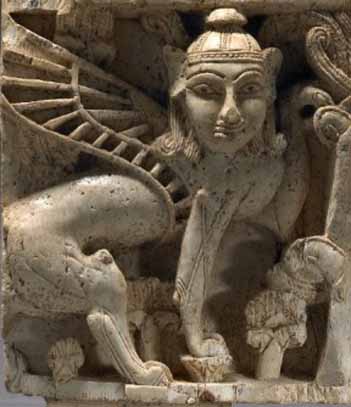
It looks like this;

Sort of looks like a little alien in the middle but they appear to have grown on trees;

And here's another with a row of Wadjet at the top;

They seem to have liked strange Egyptian ivories, in fact their collection reminds me of Father Crespi's...!?!

edit on Kam13116vAmerica/ChicagoSaturday1731 by Kantzveldt because: (no reason given)
originally posted by: Kantzveldt
a reply to: TonyS
Yes it's from the Madonna and Saint Anne with Holy infants cartoon, but anyway also yes the Nimrud excavations found an enormous amount of remarkable material in those vaults which isn't well enough known .
Wow just look at the Egyptian influence here or visa versa.
The rings above are just fantastic. Made as good as they could be today. Some of this other gold and art work looks sloppy when compared to the high skill involved with the rings even though its clearly much harder to work at that level.
a reply to: Logarock
Yes i like their very fine inlaid stone work such as on this bracelet, even though some of the stones have fallen out, you can even see one of the central worshipers had red hair and beard, which is interesting.
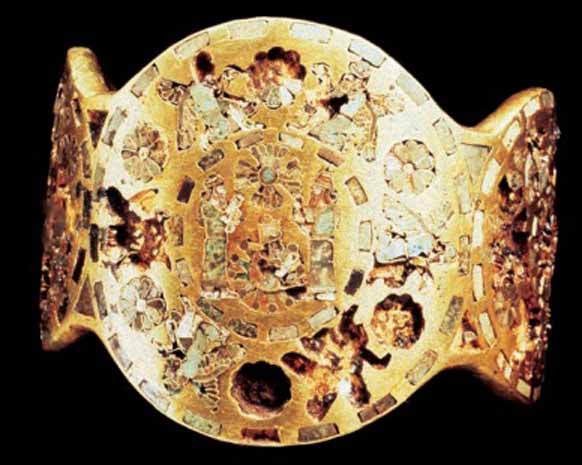
And i like their little dog figurines, dog inscribed with the name "Loud is his bark!" (dan rigiššu) in cuneiform script, which were found down a well.
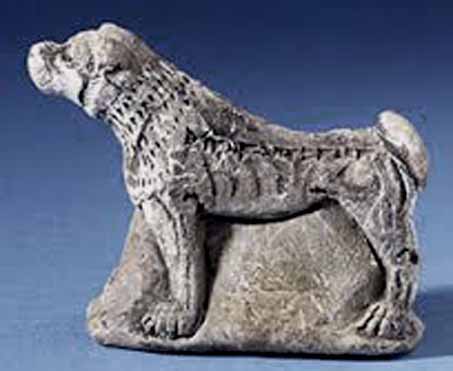
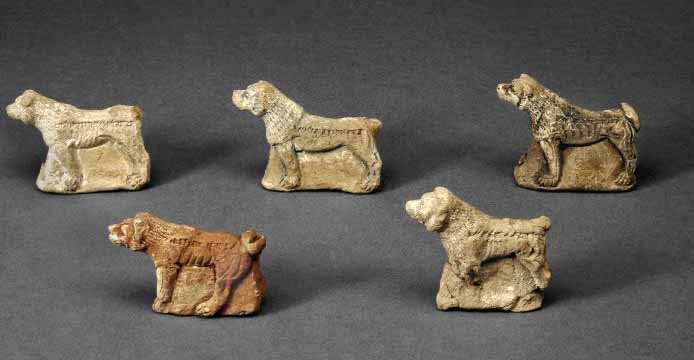
Yes i like their very fine inlaid stone work such as on this bracelet, even though some of the stones have fallen out, you can even see one of the central worshipers had red hair and beard, which is interesting.

And i like their little dog figurines, dog inscribed with the name "Loud is his bark!" (dan rigiššu) in cuneiform script, which were found down a well.


edit on Kam13116vAmerica/ChicagoSaturday1731 by Kantzveldt because: (no reason given)
originally posted by: Kantzveldt
a reply to: Spider879
It's broken but i suspect he was holding a sword and stabbing a lion you can see the paw of, you might like these Nimrud ivories of African tribute bearers;
a reply to: aboutface
Yes, that looks like a Pseudo-Egyptian Phonecian piece.
a reply to: beansidhe
I'm not sure really until i can source a photo of the actual object, there was also this multiple cups on stems so possibly also some sort of tubular arrangement.
[/quote ]
Thanks for the explanation, yes I can make sense out of it now,about the Kush bearing tribute,I think it maybe more of a trade item,tribute imply power play relationship,and as far as I know Kush never came under the political sway of Phoenicia,matter of fact it was the other way around,but during the cold war between Kush and Assyria Kush trading agents traded horses with their cold war enemies much as the USA traded with the former USSR along with spies and political intrigue use their satellite states in proxy wars before finally they went from cold to hot.
The Laventines were certainly Egyptophiles they and their brake away state the Carthaginians loved themselves some Isis and Bes the the above were found in both Carthage and Ibiza.
www.beazley.ox.ac.uk...
Fine source for things Punic and Laventineedit on 17-1-2015 by Spider879 because: typo.
Iraqi excavations in 1988–1990 revealed the tombs of a number of Assyrian queens containing astonishing quantities of gold objects and jewellery on a scale to match the discovery of the tomb of Tutankhamun. Following the 1st Gulf War in 1991 and the imposition of sanctions, further archaeological work in Iraq, at least for foreign missions, became impossible
What a shame, the untold antiquities and history that has been lost not only in Iraq, but across the entire Middle East thanks to man's inability to reach peace and prevent fanaticism. I still have the vivid memory of watching news footage from pre-9/11 of the animals running Afghanistan blowing up the giant carved Buddhas. Throw in all the destruction around the Holy Land's historic sites, the shelling in Iraq and the surrounding area, and the centuries of grave robbing and tomb raiding throughout the region and the amount of history lost is heartbreaking.
new topics
-
Federal law trumps state and local law every time
Social Issues and Civil Unrest: 2 hours ago
top topics
-
DOJ Special Counsel Robert HUR Says JOE BIDEN Can Be ARRESTED After Jan 20th 2025.
Above Politics: 16 hours ago, 12 flags -
Federal law trumps state and local law every time
Social Issues and Civil Unrest: 2 hours ago, 8 flags
active topics
-
Federal law trumps state and local law every time
Social Issues and Civil Unrest • 4 • : Bluntone22 -
Ed Dowd some good news
Medical Issues & Conspiracies • 37 • : Owlwatcher -
I thought Trump was the existential threat?
World War Three • 69 • : underpass61 -
Well, here we go red lines crossed Biden gives the go ahead to use long range missiles
World War Three • 373 • : bastion -
DOJ Special Counsel Robert HUR Says JOE BIDEN Can Be ARRESTED After Jan 20th 2025.
Above Politics • 19 • : matafuchs -
Petition Calling for General Election at 564,016 and rising Fast
Political Issues • 90 • : gortex -
Post A Funny (T&C Friendly) Pic Part IV: The LOL awakens!
General Chit Chat • 7828 • : baddmove -
Russia Ukraine Update Thread - part 3
World War Three • 6889 • : Oldcarpy2 -
The Acronym Game .. Pt.4
General Chit Chat • 990 • : KnowItAllKnowNothin -
Anyone like the Scorpions?
Music • 17 • : KrustyKrab

